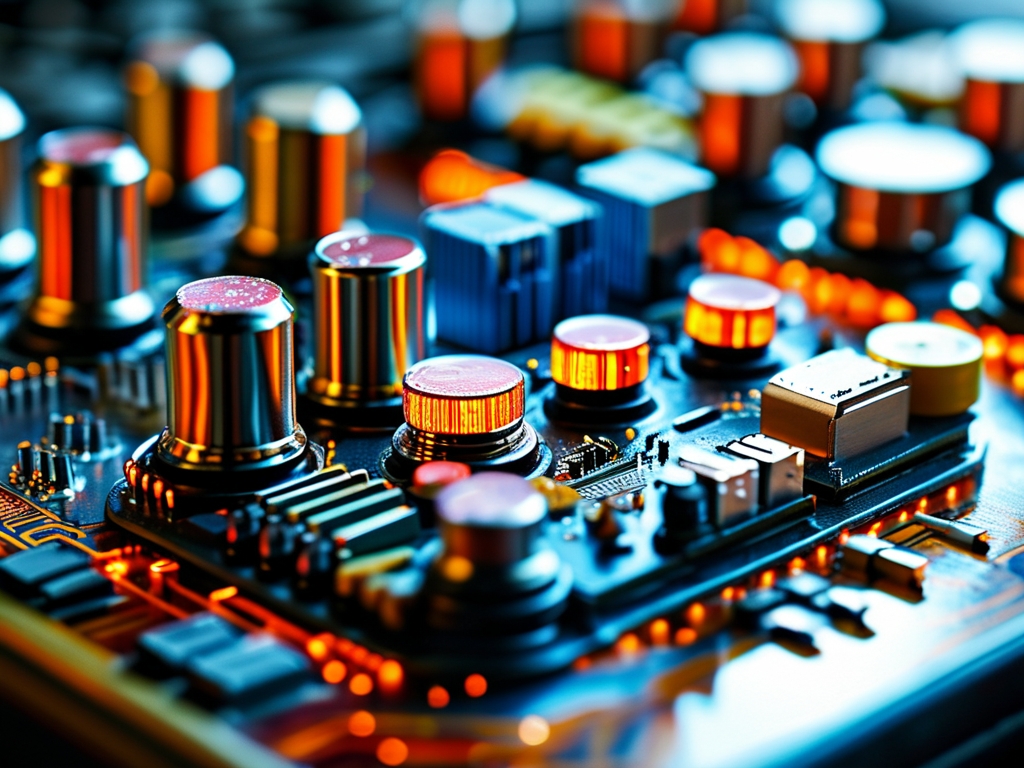Embedded systems form the backbone of modern electronics, powering devices from smart appliances to industrial automation. At the heart of these systems lie foundational components like resistors and capacitors, which ensure stability, precision, and functionality. While often overlooked, these passive components are indispensable in embedded development. This article explores their roles, selection criteria, and practical applications.

1. Resistors: The Gatekeepers of Current
Resistors regulate current flow, divide voltages, and protect sensitive circuits. In embedded systems, they serve critical functions:
- Signal Conditioning: Voltage dividers using resistors adapt sensor outputs (e.g., temperature or light sensors) to microcontroller input ranges.
- Pull-Up/Pull-Down Networks: Resistors ensure digital pins maintain defined logic states, preventing floating inputs in GPIO configurations.
- Current Limiting: LEDs, transistors, and ICs rely on resistors to avoid overcurrent damage. For example, a 220Ω resistor in series with an LED ensures safe operation at 5V.
Selection Criteria:
- Tolerance: Precision resistors (1% tolerance) are essential for analog-to-digital converters (ADCs) to minimize measurement errors.
- Power Rating: High-power resistors dissipate heat in motor drivers or power supplies.
- Package Size: Surface-mount resistors (e.g., 0402 or 0603) save space in compact embedded designs.
2. Capacitors: Stabilizers of Power and Signals
Capacitors store energy, filter noise, and stabilize voltage rails. Their roles in embedded systems include:
- Decoupling: Placed near IC power pins, capacitors (e.g., 100nF ceramic) suppress high-frequency noise, ensuring stable operation.
- Bulk Energy Storage: Larger electrolytic capacitors (e.g., 10µF–100µF) smooth voltage fluctuations in power supplies.
- Timing Circuits: RC networks with capacitors define clock frequencies or debounce mechanical switches.
Selection Challenges:
- Dielectric Material: Ceramic capacitors offer low ESR for decoupling, while tantalum capacitors provide reliability in high-temperature environments.
- Voltage Rating: A capacitor’s rating must exceed the system’s maximum voltage to prevent failure.
- ESR and ESL: Low equivalent series resistance (ESR) and inductance (ESL) are critical for high-speed digital circuits.
3. Interplay in Embedded Designs
Resistors and capacitors often work together. For instance:
- RC Filters: A resistor-capacitor pair can create low-pass filters to eliminate noise from sensor signals.
- Reset Circuits: An RC network generates a delay to ensure microcontrollers boot reliably after power-up.
- Oscillators: Crystal oscillators rely on load capacitors and resistors to maintain stable clock frequencies.
4. Common Pitfalls and Solutions
- Overheating Resistors: Undersized resistors in high-current paths can overheat. Solution: Calculate power dissipation (P = I²R) and choose appropriate ratings.
- Capacitor Aging: Electrolytic capacitors degrade over time, causing power instability. Solution: Use polymer capacitors or redundancy in critical systems.
- Parasitic Effects: Stray capacitance/resistance in PCB traces can distort signals. Solution: Optimize layout spacing and use guard rings.
5. Future Trends
As embedded systems shrink and demand higher efficiency, component innovation continues:
- Miniaturization: Ultra-small 0201 resistors and multi-layer ceramic capacitors (MLCCs) enable wearable and IoT devices.
- Integrated Passives: System-in-Package (SiP) designs embed resistors/capacitors directly into ICs, reducing board space.
- Smart Components: Resistors with embedded sensors or self-healing capacitors are emerging for adaptive systems.
Resistors and capacitors are the unsung heroes of embedded development. Their proper selection and application directly impact system reliability, performance, and longevity. By understanding their characteristics and interdependencies, engineers can design robust embedded systems capable of meeting tomorrow’s technological challenges.









